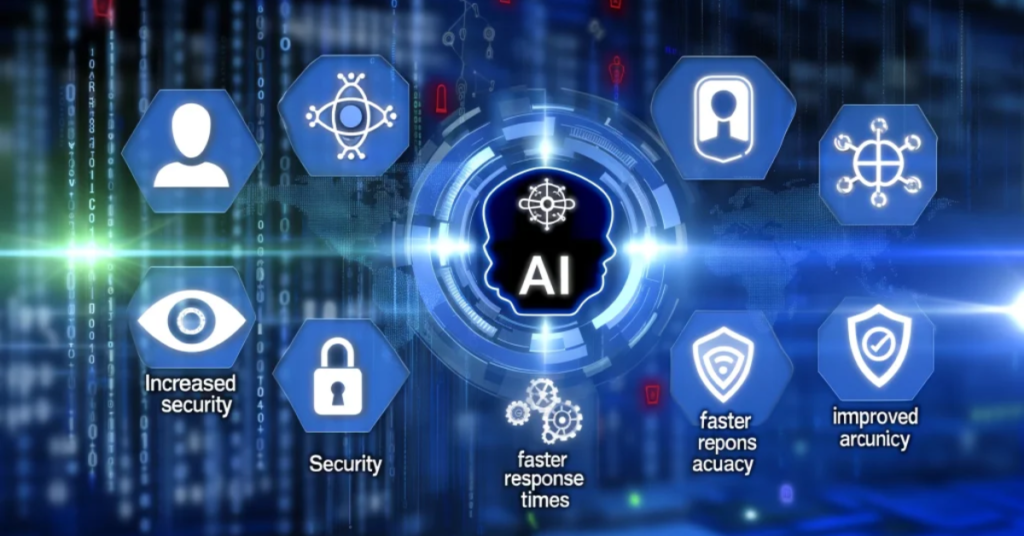In the modern world where information and communication technology forms a core competency, cybersecurity cannot be overemphasized. Pervasive classical security methods that were useful in the pre-cyber threat world are not enough to counter modern threat agents. Here comes AI-enabled security threat detection as a novelty in the cybersecurity world. In this case, HostAix use, of AI in security provides robust security, minimizes risks and keeps businesses going.
Why AI is necessary for present-day Cybersecurity?
Targets are becoming more informed, methods more diverse, and attacks happen more often. This is because any organization is at risk of multiple dangers ranging from ransomware, phishing, and other threats to their networks daily. The current traditional security systems are very weak, especially in the aspect of early detection of new or emerging threats. This is where AI-powered threat detection steps in, offering unparalleled advantages:
- Real-Time Analysis: Different AI systems are applied to sort large amounts of data within a second or even less, to identify some kind of irregularity.
- Advanced Threat Intelligence: The features of machine learning make it possible for such models to learn about newer threats and set up stronger protection.
- Predictive Analysis: AI identifies possible threats by analyzing the past and present results and prepares a counter-move to prevent the threats identified risks in light of past and current information, and then prevent them effectively.
How Threat Detection Through AI Function
Several AI functions detect the threat:
- Behavioral Analytics: AI utilises behavioural analytical models to study the generic behaviour of users, devices and networks. If there are variations for example logins, or data move, then the system will generate an alarm.
- Anomaly Detection: These are features that AI is capable of identifying when there is an anomaly given that it has looked at patterns across network traffic applications usage and user behaviour.
- Threat Hunting and Forensics: AI helps in Threat Hunting which is an utterly tedious job of identifying threats and breaches. It is also useful in forensic analysis since it determines the origin and dimension of an attack.
- Automated Response Mechanisms: In addition to threat identification, AI systems also carry out countermeasures applicable in system isolation or inhibiting malicious IPs and the like to reduce the impact.
These were the features. Now let’s discuss the Artificial Intelligence for security by HostAix
Solution: Artificial intelligence for Security by HostAix
For platforms like HostAix, where uptime, data integrity, and customer trust are paramount, AI-driven security offers a host of benefits:
- Enhanced Scalability: AI solutions are highly portable and can easily be extended to manage large, complicated networks, something that hosting providers require.
- Reduced False Positives: AI prevents reporting of false positives helping IT departments to address actual risks without getting lost in unrelated alarms.
- 24/7 Monitoring: The use of AI in monitoring provides a way of monitoring the processes without having to engage manpower all the time to monitor the security aspect at all times.
- Regulatory Compliance: AI-based security systems help an organization meet the requirements of data protection and notify breaches on time.
AI vs. Traditional Threat Detection
| Feature | Traditional Detection | AI-Driven Detection |
| Speed | Reactive and slow | Real-time and proactive |
| Accuracy | High false positive rate | Enhanced precision |
| Adaptability | Limited to known threats | Learns and adapts to new threats |
| Scalability | Limited by human resources | Virtually limitless |
Trends in Artificial Intelligence Used for Security
The tasks that AI can perform in cybersecurity have not ceased to expand over the years. Here are some trends that will shape the future of AI-driven security threat detection:
- Integration with IoT Security: As more and more IoT devices enter the market, artificial intelligence will effectively be relied upon to manage these endpoints.
- Explainable AI (XAI): Owners and maintainers of AI-based decision-making will need to provide more detailed information on its operations to increase user trust and compliance in cybersecurity systems.
- Deep Learning Models: Reasoned with more complex risks, advanced algorithms shall provide higher precision in unusual cases.
Conclusion
With risks to cybersecurity rising steadily, artificial intelligence in threat detection has replaced wishes and whims as must-have security measures. Thus, applying artificial intelligence in the field of cyber protection allows hosting providers like HostAix to respond to continuously emerging threats, preserve the customers’ confidence and maintain a record of the company’s performance. With the help of AI technologies companies can keep up with the cyber-criminals, while protecting their online property.
